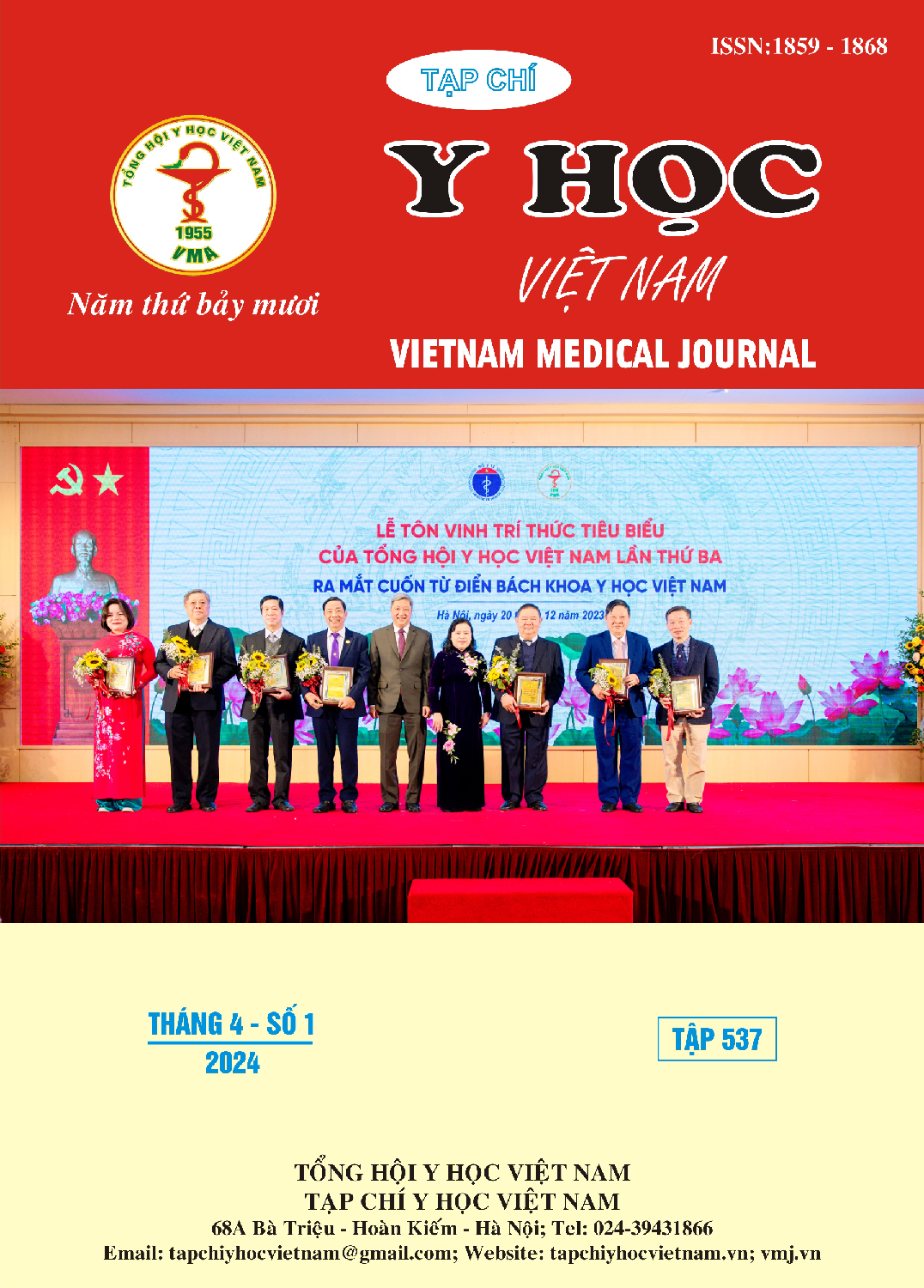KHẢO SÁT TÁC DỤNG CẢI THIỆN TRÍ NHỚ CỦA VIÊN NÉN ĐAN SÂM TAM THẤT TRÊN MÔ HÌNH IN VIVO VÀ IN VITRO
Nội dung chính của bài viết
Tóm tắt
Đặt vấn đề: Sa sút trí tuệ hay còn gọi là suy giảm trí nhớ, bệnh tiến triển và gây ảnh hưởng nghiêm trong tới các hoạt động sinh hoạt hằng ngày. Các thuốc điều trị hiện nay đa phần hướng tới ức chế acetylcholin còn hạn chế. Vì vậy nghiên cứu nhằm đánh giá tác dụng cải thiện trí nhớ của viên nén Đan sâm Tam thất (DSTT) trên in vitro và in vivo. Mục tiêu: Khảo sát khả năng cải thiện trí nhớ của viên nén DSTT trên in vivo và in vivo. Đối tượng và phương pháp: Viên nén DSTT chứa cao Đan sâm 52,5 mg, cao Tam thất 20 mg.Trong nghiên cứu sử dụng phương pháp thuốc thử Ellman để sàng lọc tác dụng ức chế AChE in vitro của viên nén DSTT. Mô hình ma trận bơi được sử dụng để đánh giá tác dụng cải thiện trí nhớ của viên nén DSTT trên chuột nhắt suy giảm trí nhớ bằng scopolamin. Kết quả: Viên nén DSTT có khả năng ức chế acetylcholinesterase (Ache) với giá trị IC50 = 28,16 mg/mL. Trên mô hình ma trận bơi, chuột nhắt suy giảm trí nhớ bằng scopolamin, uống viên nén Đan sâm – Tam thất với các mức liều lần lượt 1 viên/kg; 1,5 viên/kg và 2 viên/kg liên tục 22 ngày thì cho thấy có khả năng khôi phục trí nhớ dài hạn, thông qua làm tăng thời gian ở diện tích ¼ chứa chân đế lần lượt: 47,33 (p<0,05); 42,39 (p<0,05); 21,29 (p<0,05) so với lô bệnh lý. Kết luận: Viên nén DSTT với mức liều 1 viên/kg; 1,5 viên/kg; 2 viên/kg có khả năng cải thiện trí nhớ trên mô hình in vivo và in vitro.
Chi tiết bài viết
Từ khóa
Đan sâm, Tam thất, scopolamin
Tài liệu tham khảo
1. Adlimoghaddam A, Neuendorff M, Roy B, Albensi BC. A review of clinical treatment considerations of donepezil in severe Alzheimer's disease. CNS neuroscience & therapeutics. 2018; 24(10):876-888. DOI: 10.1111/cns.13035.
2. Harvey RJ, Skelton-Robinson M, Rossor MN. The prevalence and causes of dementia in people under the age of 65 years. Journal of Neurology, Neurosurgery & Psychiatry. 2023; 74(9):1206-1209. DOI: 10.1136/jnnp.74.9.1206.
3. Nordström P, Nordström A, Eriksson M, Wahlund LO, Gustafson Y. Risk factors in late adolescence for young-onset dementia in men: a nationwide cohort study. JAMA Intern Med. 2013; 173: 1612. DOI: 10.1001/ jamainternmed. 2013.9079.
4. Gale SA, Acar D, Daffner KR. Dementia. Am J Med. 2018; 131(10):1161-1169. DOI: 10.1016/ j.amjmed.2018.01.022.
5. Li Q, He S, Chen Y, Feng F, Qu W, Sun H. Donepezil-based multi-functional cholinesterase inhibitors for treatment of Alzheimer's disease. European Journal of Medicinal Chemistry. 2018, 158:463-477. DOI: 10.1016/j.ejmech.2018.09.031
6. Hansen RA, Gartlehner G, Webb AP, Morgan LC, Moore CG, et al. Efficacy and safety of donepezil, galantamine, and rivastigmine for the treatment of Alzheimer’s disease: a systematic review and meta-analysis. Clinical interventions in aging. 2008; 3(2): 211-225. DOI:10.3233/JAD-132690.
7. Zhou X, Razmovski-Naumovski V, Kam A, Chang D, Li C, Bensoussan A, et al. Synergistic effects of Danshen (Salvia Miltiorrhizae Radix et Rhizoma) and Sanqi (Notoginseng Radix et Rhizoma) combination in angiogenesis behavior in EAhy 926 cells. Medicines. 2017; 4(4):85. DOI: 10.3390/medicines4040085.
8. Liu T, Jin H, Sun QR, Xu JH, Hu HT. The neuroprotective effects of tanshinone IIA on β-amyloid-induced toxicity in rat cortical neurons. Neuropharmacology. 2010; 59(7-8):595-604. DOI: 10.1016/j.neuropharm.2010.08.013.
9. Nguyen Thi Thanh Loan, Hang Pham Thi Nguyet, Van Tai Nguyen. Contribution of ginsenosides Rg1, Rb1 to the neuroprotective effect of Panax notoginseng in mouse organotypic hippocampal slice cultures exposed to oxygen and glucose deprivation. Vietnam Journal of Science. 2021; 63(2):64-69. DOI: http://doi.org/10.31276/ VJSTE.63(2).64-69.
10. Ozarowski M, Mikolajczak PL, Piasecka A, Kujawski R, Bartkowiak-Wieczorek J, Bogacz A, et al. Effect of Salvia miltiorrhiza root extract on brain acetylcholinesterase and butyrylcholinesterase activities, their mRNA levels and memory evaluation in rats. Physiology & Behavior. 2017; 173:223-230. DOI: 10.1016/j. physbeh.2017.02.019.


